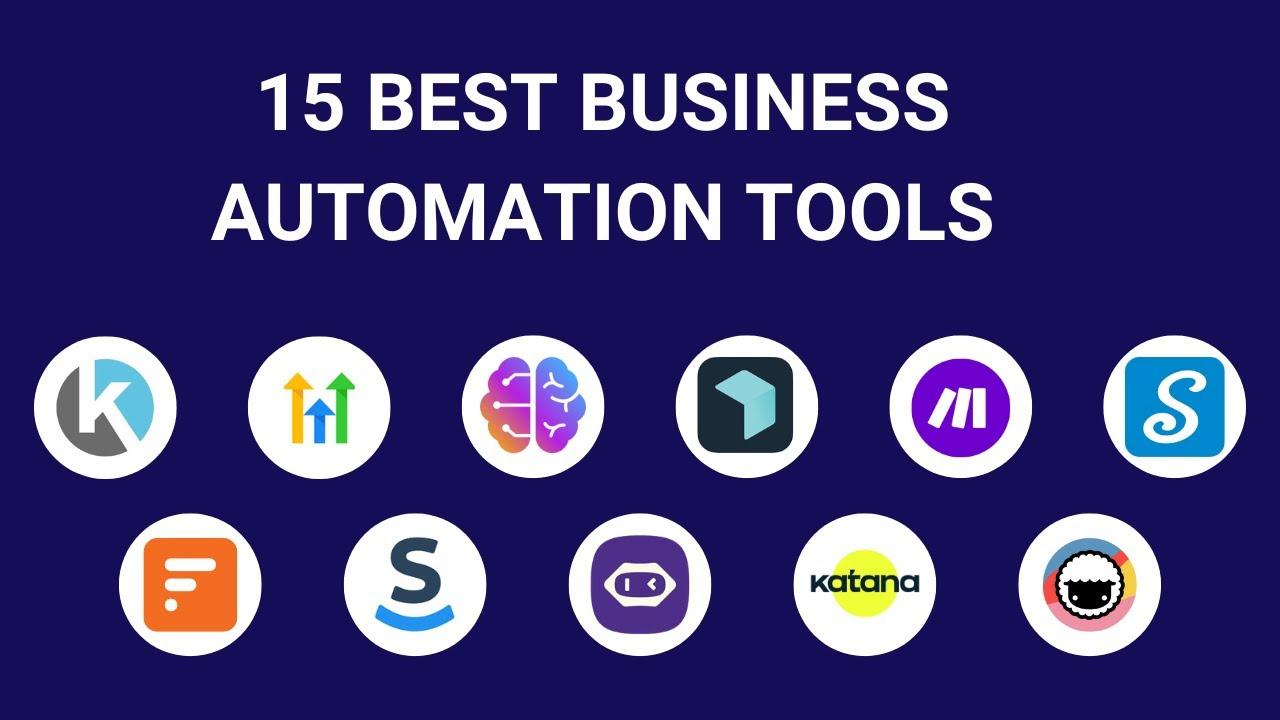In an era where the boundaries between work and home have blurred, the quest for productivity in remote settings has surged to the forefront of organizational strategies. As professionals navigate the complexities of virtual collaboration, the integration of automation stands out as a pivotal solution, promising to streamline workflows and liberate time. This article delves into the transformative role of automation in remote work environments, exploring how innovative tools not only enhance efficiency but also empower individuals to focus on what truly matters—creativity, collaboration, and connection. Join us as we uncover the dynamics of this technological evolution and its profound impact on the future of work.
Exploring the Automation Landscape: Tools That Transform Remote Work
In the evolving world of remote work, automation tools are becoming indispensable allies for professionals seeking to enhance their efficiency. Project management software like Monday.com and Trello allow teams to organize tasks seamlessly, ensuring that everyone is on the same page regardless of their location. Meanwhile, tools such as Zapier and Integromat enable users to automate repetitive tasks—such as data entry and report generation—through integrations with applications they already use. By minimizing manual effort, these tools not only reduce the risk of errors but also free up valuable time for creative and strategic pursuits.
Moreover, the rise of communication platforms such as Slack and Microsoft Teams facilitates real-time collaboration and connectivity. With features like automated reminders and bots—such as Trello’s Slack bot—these platforms help maintain momentum on projects. Integrations with automation tools can also streamline workflows: for example, using Google Calendar to schedule meetings automatically based on team member availability. Here’s a quick overview of some popular automation tools:
| Tool | Primary Function | Key Benefit |
|---|---|---|
| Zapier | Task automation | Connects multiple apps for seamless workflow |
| Trello | Project management | Visual task tracking for teams |
| Slack | Team communication | Instant messaging and file sharing |
| Asana | Task organization | Clear visualization of project timelines |

Streamlining Workflows: How Automation Reduces Bottlenecks
In today’s fast-paced work environment, automation serves as a crucial ally in tackling inefficiencies that can hinder productivity. By employing automated tools, teams can streamline repetitive tasks that traditionally consume significant amounts of time. Processes such as data entry, invoicing, and project management can be easily automated, freeing up valuable human resources to focus on more strategic activities. With the right automation strategies in place, organizations can identify and address bottlenecks promptly, ensuring that team members remain engaged and productive without the frustration of unnecessary delays.
Additionally, the integration of automation fosters a more cohesive workflow across remote teams by providing consistent communication and collaboration platforms. Tools like automated notifications, task reminders, and status updates keep team members informed and accountable, even when working from different locations. A systematic approach to automation can also enhance transparency, allowing teams to easily identify potential delays and proactively address them. To illustrate this, consider the following table that outlines common tasks suitable for automation and their potential benefits:
| Task | Benefit |
|---|---|
| Data Entry | Reduces errors and saves time |
| Invoicing | Ensures timely payments |
| Email Responses | Enhances customer satisfaction |
| Reporting | Provides instant insights |

Balancing Human Touch and Tech: Cultivating Collaboration in a Digital Space
In today’s remote work landscape, the convergence of technology and the human element has never been more crucial. While automation tools can significantly enhance efficiency, the unique value of human interaction remains irreplaceable. Striking a balance between these two forces can lead to a harmonious workspace, fostering collaboration that transcends geographical limitations. Organizations can cultivate a culture that thrives on technology by implementing real-time messaging platforms and collaborative tools that keep teams connected, while also prioritizing virtual coffee breaks and interactive team-building exercises to maintain the essential personal touch.
To facilitate this blend of automation and collaboration, companies can adopt a structured approach that amplifies productivity while safeguarding human relationships. Here are some strategies to consider:
- Flexible work systems: Ensure tools are adjustable to individual worker preferences.
- Regular check-ins: Schedule consistent meetings to strengthen team bonds.
- Feedback loops: Encourage open dialogue about the effectiveness of tools and practices.
| Automation Tool | Benefit |
|---|---|
| Project Management Software | Streamlines tasks and enhances visibility |
| AI Chatbots | Provides quick answers to common queries |
| Time Tracking Tools | Promotes accountability and informs scheduling |

Measuring Success: Key Metrics for Evaluating Automation Impact on Productivity
To effectively gauge the influence of automation on productivity in remote work settings, organizations must identify and analyze specific metrics. Tracking output quality helps ensure that automation doesn’t just increase quantity but maintains a standard of excellence in deliverables. Additionally, measuring task completion rates provides insight into how automation accelerates workflows. Other key metrics to consider include employee engagement and time spent on repetitive tasks, which can reveal how much time automation frees up for more strategic initiatives. These insights allow businesses to pinpoint areas where automation is delivering value and where further improvements can be made.
| Metric | What It Measures | Importance |
|---|---|---|
| Output Quality | Standard of work produced | Maintains high client satisfaction |
| Task Completion Rate | Efficiency of workflow | Identifies bottlenecks in processes |
| Employee Engagement | Motivation and job satisfaction | Enhances retention and productivity |
| Time on Repetitive Tasks | Time spent on non-value-add work | Highlights areas for automation |
Incorporating these metrics into a comprehensive evaluation strategy enables companies to make data-driven decisions about their automation processes. Furthermore, employing surveys and feedback mechanisms can provide qualitative insights from employees about how automation tools impact their daily functions. By understanding both quantitative and qualitative data, organizations can refine their automation strategies to maximize productivity gains, improve work-life balance for employees, and ultimately enhance organizational efficiency. This holistic approach ensures that automation is not merely a technological upgrade, but a transformative force that elevates the nature of remote work itself.
In Retrospect
In an era where the boundaries of the workplace have expanded far beyond traditional office walls, automation emerges as a beacon of efficiency, guiding remote workers towards a more productive future. As we’ve explored, the integration of automated tools not only streamlines tasks but also fosters a culture of adaptability, enabling individuals and teams to focus on what truly matters: innovation and collaboration.
As we stand on the brink of this new work paradigm, the challenge ahead is not solely in adopting technology but in harmonizing it with human creativity and decision-making. The journey towards enhanced productivity is one that invites us to rethink our approaches, embrace change, and leverage automation as a partner, rather than a replacement.
Ultimately, as we move forward in this dynamic landscape, it becomes clear that the intersection of automation and remote work holds immense potential. By harnessing these tools thoughtfully, we can create environments that not only boost efficiency but also nurture engagement and well-being. The future of work is here—let us embrace it with intention and clarity, paving the way for a more productive tomorrow.






